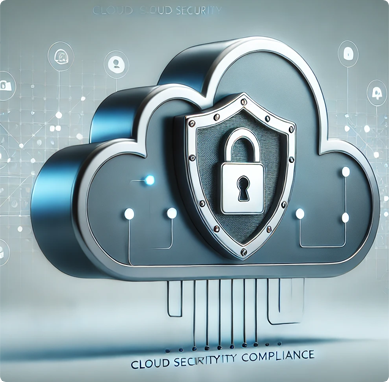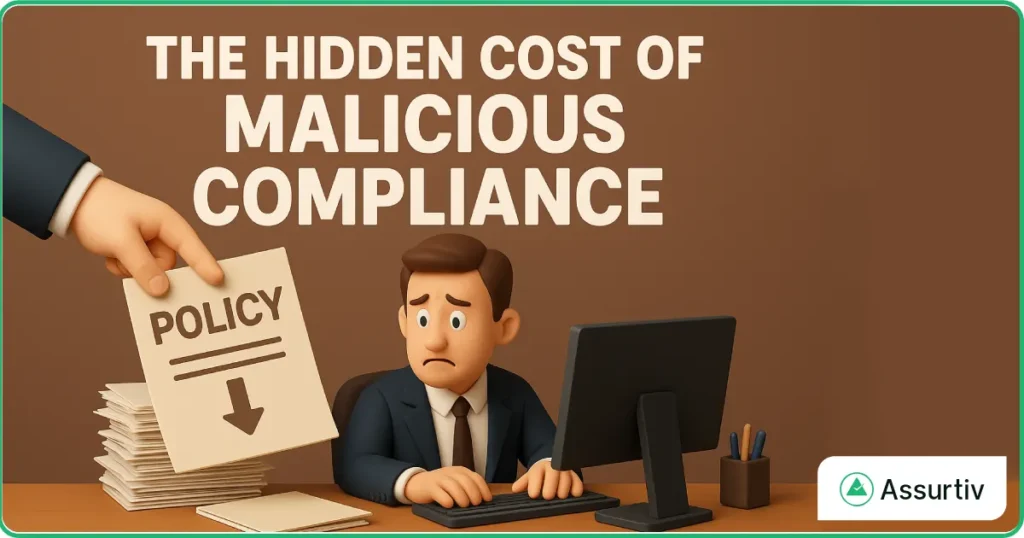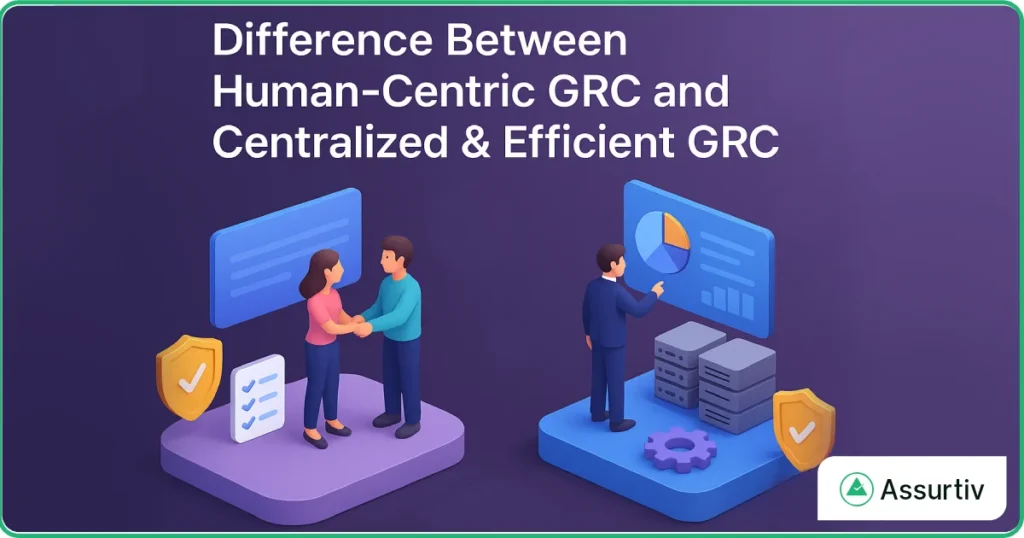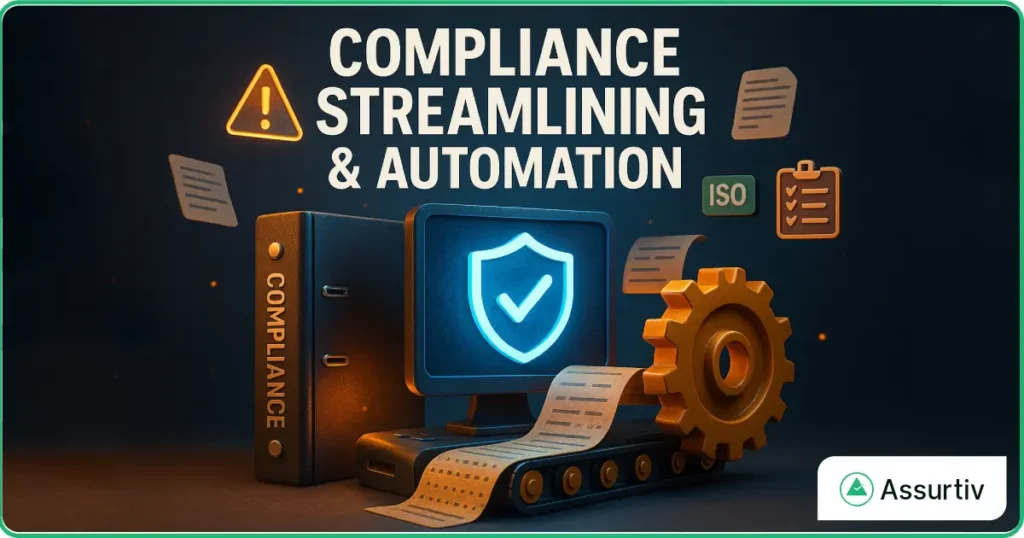SOC 2 Compliance: Policies, Controls and Implementation
By assurtiv | Last Updated: 20 Jan 2025
 In today’s digital world, data security, privacy, and reliability are paramount for any organization. Whether you’re a startup or an established business, ensuring that your systems are secure and trustworthy is critical. This is where SOC 2 compliance comes into play. But what exactly is SOC 2 compliance, and why should you care about it? In this blog, we will break down SOC 2 compliance in simple terms and explain the policies, controls, and implementation steps required to achieve it.
In today’s digital world, data security, privacy, and reliability are paramount for any organization. Whether you’re a startup or an established business, ensuring that your systems are secure and trustworthy is critical. This is where SOC 2 compliance comes into play. But what exactly is SOC 2 compliance, and why should you care about it? In this blog, we will break down SOC 2 compliance in simple terms and explain the policies, controls, and implementation steps required to achieve it.
What is SOC 2 Compliance?
SOC 2 stands for System and Organization Controls 2, which is a set of security standards designed for organizations that handle customer data, especially cloud-based service providers. Developed by the American Institute of Certified Public Accountants (AICPA), SOC 2 compliance ensures that a company manages customer data securely and in compliance with established security principles.
SOC 2 is especially important for companies offering SaaS (Software as a Service) solutions or handling sensitive data. Being SOC 2 compliant demonstrates your commitment to maintaining robust security measures and protecting your customers’ data.
The Five Trust Service Criteria of SOC 2
SOC 2 compliance is based on five trust service criteria (also known as principles), which are the foundation of the controls that must be in place for compliance:
- Security: This is the core principle of SOC 2. It ensures that an organization’s systems are protected from unauthorized access, data breaches, and attacks. Security measures may include firewalls, intrusion detection systems, and encryption.
- Availability: This principle ensures that systems and services are available as promised to customers. It includes measures for system performance monitoring and disaster recovery plans.
- Processing Integrity: This refers to the accurate and complete processing of data. It ensures that systems work as expected and that the data is processed without errors or delays.
- Confidentiality: This principle ensures that sensitive data, such as customer information, is protected from unauthorized access. It includes the use of encryption and secure data storage practices.
- Privacy: This focuses on the protection of personal information, ensuring that it is collected, used, retained, and disclosed in compliance with privacy regulations.
SOC 2 Policies and Controls
SOC 2 compliance involves implementing specific policies and controls to meet the above criteria. These policies and controls are designed to minimize risks and protect data from unauthorized access or misuse.
- Access Controls: One of the most crucial aspects of SOC 2 compliance is controlling who has access to your systems and data. Access should be granted based on the principle of “least privilege,” meaning employees should only have access to the data necessary for their roles.
- Incident Response Plan: SOC 2 compliance requires that organizations have a plan in place to respond to security incidents. This includes identifying, managing, and mitigating security breaches to minimize damage.
- Data Encryption: Encryption is vital for protecting data both in transit and at rest. SOC 2 requires organizations to implement encryption techniques to prevent unauthorized access to sensitive data.
- Regular Audits: SOC 2 compliance also demands regular audits to assess the effectiveness of your security controls and identify areas for improvement. Audits can be conducted by third-party auditors or internal teams.
- Monitoring and Logging: SOC 2 requires organizations to continuously monitor their systems for suspicious activity. This includes logging access to systems and tracking data processing activities.
Steps to Achieve SOC 2 Compliance
Achieving SOC 2 compliance is not an overnight process. It requires careful planning, implementing security measures, and continuous monitoring. Here’s a step-by-step guide to help you get started:
Understand the Requirements
The first step is understanding the SOC 2 framework and the five trust principles. You should work with your team and any external consultants to understand what controls and policies will need to be implemented.
Perform a Gap Analysis
Conduct a gap analysis to identify any areas where your current security measures are lacking. This will help you identify the specific policies and controls you need to put in place to meet the SOC 2 criteria.
Implement the Necessary Policies and Controls
Once you’ve identified the gaps, start implementing the necessary policies and controls. This could involve strengthening your access controls, encrypting sensitive data, and establishing an incident response plan.
Engage a SOC 2 Auditor
Once you have implemented the required policies and controls, you’ll need to engage a certified third-party auditor to perform a SOC 2 audit. The auditor will assess your organization’s security posture and determine if you meet the SOC 2 requirements.
Ongoing Monitoring and Continuous Improvement
SOC 2 compliance is an ongoing process, not a one-time event. Continuous monitoring and regular audits are essential to maintaining your compliance. This ensures that your systems and processes remain secure and that you stay up-to-date with evolving security threats.
The Benefits of SOC 2 Compliance
Achieving SOC 2 compliance can provide your organization with several benefits:
- Build Trust with Customers: SOC 2 certification demonstrates your commitment to safeguarding customer data, which can help build trust with current and potential customers.
- Gain a Competitive Advantage: In a competitive market, being SOC 2 compliant can differentiate your business and help you win clients who prioritize data security.
- Enhance Your Security Posture: Implementing SOC 2 policies and controls strengthens your overall security and helps protect your organization from cyber threats.
- Meet Legal and Regulatory Requirements: SOC 2 compliance helps you meet legal and regulatory requirements related to data protection and privacy.
Conclusion
SOC 2 compliance is essential for organizations handling sensitive customer data, especially in the tech and SaaS industries. By implementing the right security controls and policies, you can ensure your systems are secure and reliable. Achieving SOC 2 compliance not only protects your organization but also builds trust with customers and gives you a competitive advantage.
For businesses looking to streamline their compliance efforts, ASSURTIV, an AI-powered integrated GRC application, can help automate and manage your security, compliance, and risk management processes efficiently.




